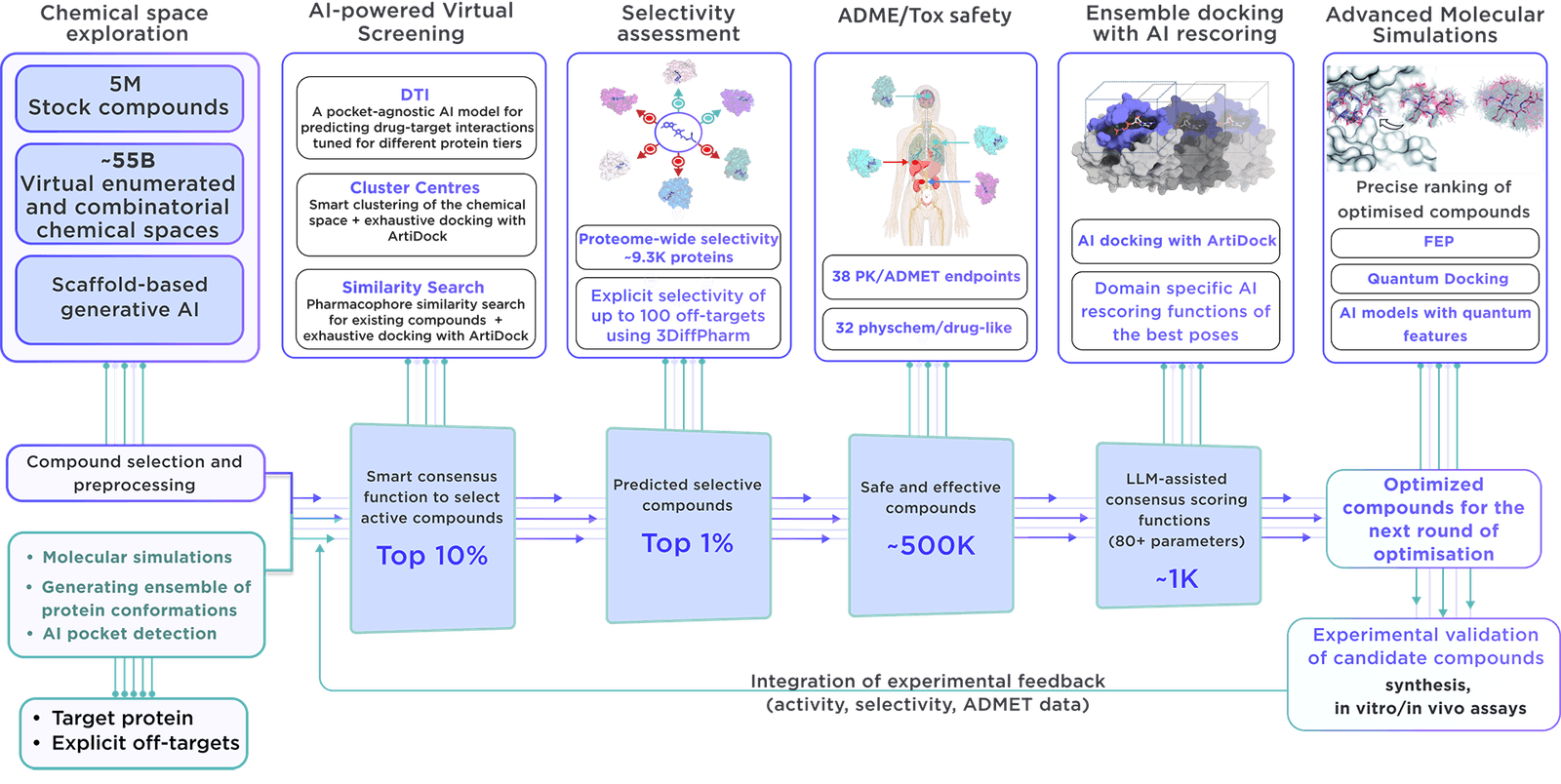Focused On-demand Libraries - Receptor.AI Collaboration
Explore the Potential with AI-Driven Innovation
The focused library is created on demand with the latest virtual screening and parameter assessment technology, supported by the Receptor.AI drug discovery platform. This method is more effective than traditional methods and results in higher-quality compounds with better activity, selectivity, and safety.
We pick out particular compounds from an extensive virtual database of more than 60 billion molecules. The preparation and shipment of these compounds are facilitated by Reaxense.
Contained in the library are leading modulators, each labelled with 38 ADME-Tox and 32 physicochemical and drug-likeness qualities. In addition, each compound is illustrated with its optimal docking poses, affinity scores, and activity scores, giving a complete picture.
We use our state-of-the-art dedicated workflow for designing focused libraries for enzymes.
It includes comprehensive molecular simulations of the catalytic and allosteric binding pockets and the ensemble virtual screening accounting for their conformational mobility. In the case of designing modulators, the structural changes induced by reaction intermediates are taken into account to leverage activity and selectivity.
Several key aspects differentiate our library:
- Receptor.AI compiles an all-encompassing dataset on the target protein, including historical experiments, literature data, known ligands, and structural insights, maximising the chances of prioritising the most pertinent compounds.
- The platform employs state-of-the-art molecular simulations to identify potential binding sites, ensuring the focused library is primed for discovering allosteric inhibitors and binders of concealed pockets.
- Over 50 customisable AI models, thoroughly evaluated in various drug discovery endeavours and research projects, make Receptor.AI both efficient and accurate. This technology is integral to the development of our focused libraries.
- In addition to generating focused libraries, Receptor.AI offers a full range of services and solutions for every step of preclinical drug discovery, with a pricing model based on success, thereby reducing risk and promoting joint project success.
Receptor.AI
Q99895
UPID:
CTRC_HUMAN
ALTERNATIVE NAMES:
Caldecrin
ALTERNATIVE UPACC:
Q99895; A8K082; O00765; Q9NUH5

